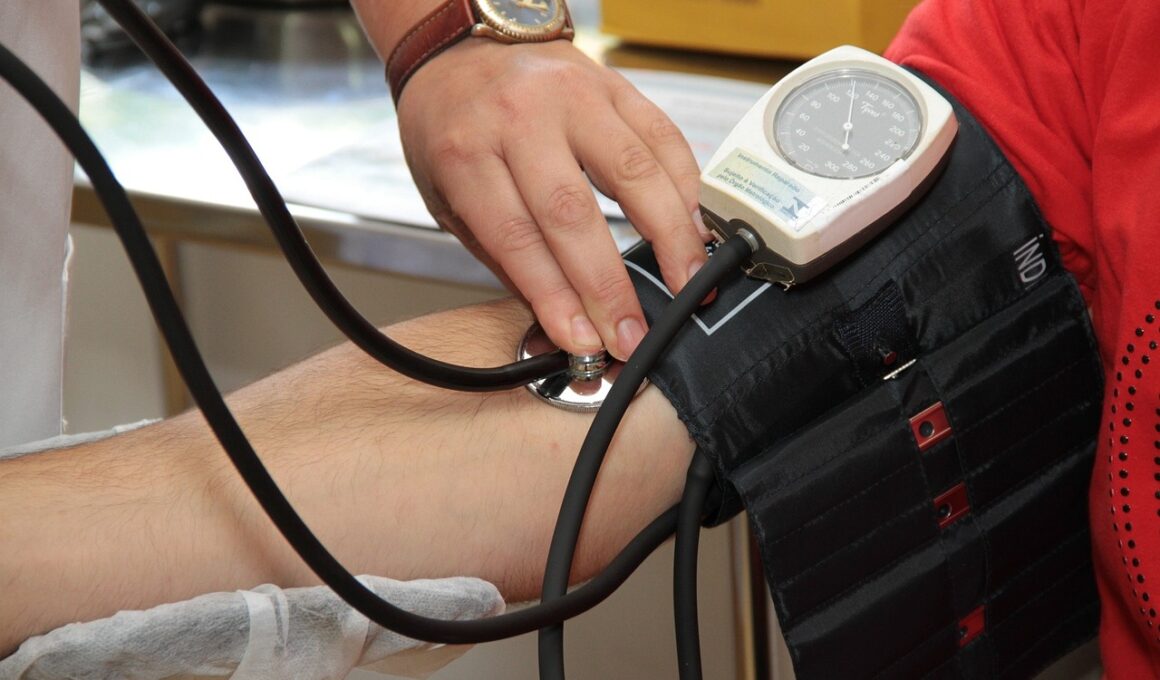How to Measure Your VO2 Max Accurately at Home
Understanding your cardiovascular fitness is crucial for your overall health and well-being. One of the best indicators of cardiovascular fitness is VO2 max, the maximum amount of oxygen your body can utilize during intense exercise. Measuring this at home may seem difficult, but with the right approach, you can get a reliable estimate. Various methods exist, ranging from step tests to using specialized equipment. Before starting, ensure you are in good health and consult with a professional if needed. Additionally, proper warm-up helps prevent injuries and encourages accurate results. A familiar exercise, such as running or cycling, should be chosen for comfort. Remember to hydrate adequately before commencing your test, ensuring your body is filled with energy to perform efficiently. Following these guidelines will optimize your VO2 max measurement efforts, providing useful insights into your cardiovascular fitness level over time. Regular assessments will also motivate and guide your fitness goals. In the following sections, detailed steps and various home-testing methods will be explored to provide you with practical and effective ways to measure your VO2 max accurately.
Methods to Measure VO2 Max at Home
There are several methods available for measuring your VO2 max at home, allowing for flexibility based on personal preference. One popular method is the Rockport Fitness Walking Test, which is simple and effective. Begin by walking one mile on a flat surface as fast as possible while recording your time. After completing the mile, take your heart rate for the final 15 seconds, and multiply this by four to get beats per minute. Using these numbers, plug them into the Rockport formula to estimate your VO2 max: 132.853 – (0.0769 * weight in pounds) – (0.3877 * age in years) + (6.315 * gender) – (3.2649 * time in minutes) – (0.1565 * heart rate). Other methods include the Cooper Test, where you run as far as possible in twelve minutes or the beep test, conducted by running back and forth between two points as indicated by beeps. Choose a method that fits your routine and prepare accordingly.
When practicing testing techniques for VO2 max, ensure you’re in a supportive environment, free from distractions that may impact performance. Factors such as weather and surface can also affect results, so choose optimal conditions for accuracy. It is crucial to know your resting heart rate as a baseline, as this can enhance the validity of your results. Measure it first thing in the morning before getting out of bed. Tracking your heart rate during testing is vital, using a smartwatch or chest strap to maintain a record. Make sure to utilize technology that can provide accurate heart rate monitoring, as this data plays a key role in the equations used to estimate VO2 max. After executing the test, analyze your results, noting benchmarks to set future fitness goals. Revisiting these assessments regularly will help identify improvements over time, allowing you to adjust your training regimen if needed. Building a comprehensive understanding of your cardiovascular fitness will not only enhance performance but also foster long-term health benefits.
Tips for Accurate Results
To ensure you obtain the most accurate results from your VO2 max test, follow some vital tips that can significantly influence your assessment. First, aim to perform the test when you feel rested and energized, avoiding any heavy workouts beforehand, as fatigue can affect performance. Additionally, stay hydrated by drinking water leading up to the test without overdoing it just before testing. Eating a light snack about an hour before testing can provide necessary energy without causing discomfort during the assessment. Consider repeating your tests several times under similar conditions to compare your results. Keep a journal for each test, including environmental factors such as temperature, surface type, time of day, and your mood at the time of testing. These variables will help determine which conditions yield your best performance while guiding you toward future improvements. Finally, involve a trustworthy workout partner or coach to offer motivation while keeping track of time, heart rate, and other crucial metrics. The support received will help you to push your limits and achieve optimal results.
Understanding your results is just as important as obtaining them. An estimated VO2 max will be displayed once you complete the calculations based on your preferred testing method. Familiarize yourself with the percentile rankings associated with your results to evaluate where you stand amongst peers. Scores can vary based on age, fitness level, and gender, so understanding your percentile will help pinpoint areas of improvement. Generally, a higher VO2 max indicates better cardiovascular fitness and endurance, making it a valuable performance metric for both amateur and elite athletes. Moreover, consider obtaining feedback from a professional if you’re uncertain about how to interpret your findings accurately. This way, you’ll have tailored advice on how to improve your cardiovascular health further. Regularly participating in aerobic exercises, mixing intensity and duration, can elevate VO2 max over time. Always track these changes carefully to remain motivated throughout your fitness journey. A gradual increase in cardiovascular fitness will encourage new goals as you continue to progress and refine your approach, aiming for a healthier lifestyle that promotes longevity.
Regularly Tracking Your VO2 Max
Tracking your VO2 max regularly is essential for evaluating your improvements and adjusting your fitness regimen as necessary. As with any fitness parameter, consistency is key, so dedicate time each month or quarter to reassess your VO2 max using the methods previously discussed. While initial assessments provide critical insights, ongoing tests reveal trends that indicate physiological changes related to your training. Goals should evolve alongside physical improvements, inspiring renewed motivation as your fitness journey progresses. With increased cardiovascular fitness comes the ability to take on more advanced workouts or attempts to achieve personal bests. Additionally, monitor your workouts closely in a fitness journal, noting anything unusual that may impact results, such as injuries or other life events. This record will enhance your understanding of what contributes to your improvements and will facilitate informed decisions when planning training schedules. Keep in mind that general lifestyle factors—like sleep or stress—can also affect cardiovascular performance. Developing a holistic approach will support your efforts to achieve and maintain your fitness goals, ultimately enhancing overall health.
In conclusion, measuring your VO2 max accurately at home serves as a critical fitness metric for anyone serious about cardiovascular health. Understanding this measurement delves deeper into personal fitness levels, enabling tailored workout plans that cater directly to your goals. As you progress, include these testing methods as part of your routine to continuously promote heart health and fitness levels. Achieve growth through awareness as you set new benchmarks to surpass. Always pick a method that aligns with lifestyle and preferences to enhance spontaneity and excitement. Incorporating fitness assessments into your schedule doesn’t have to feel repetitive; they can motivate and inspire innovative workout regimens. Furthermore, don’t hesitate to reach for assistance from exercise professionals if you seek additional clarity or support. Sharing your journey with others, whether training buddies or through online communities, encourages accountability and emotional reinforcement. Striving for substantial fitness levels is a lifelong adventure, with rewards awaiting those who remain resolute. Empower yourself today by taking action and measuring your VO2 max to unlock the full potential of your cardiovascular fitness!
Getting started requires some initial preparation, including collecting basic equipment. You will need either a stopwatch or a timer on your phone, depending on your preferred test method. If you opt for heart rate measurement, having a fitness tracker or smartwatch is indispensable for accuracy. Create a designated space conducive to testing, such as an indoor area or a safe outdoor running track. Make sure that this location allows for minimal interruptions to keep focus during the assessment. Inform anyone who may be nearby about your testing to avoid unnecessary distractions. Additionally, familiarize yourself with your chosen procedure by reading online guides or watching instructional videos ahead of time. This foundational understanding will build confidence and prepare you emotionally for the experience. As you embark on this journey of cardiovascular fitness enhancement, remember that setting personal goals contributes to sustained motivation. Allow these goals to evolve continuously, providing you with a moving target to keep pursuing progress. Ultimately, engaging with your health and fitness will result in substantial benefits and positively impact various aspects of your life, creating a holistic approach to a healthier lifestyle.


